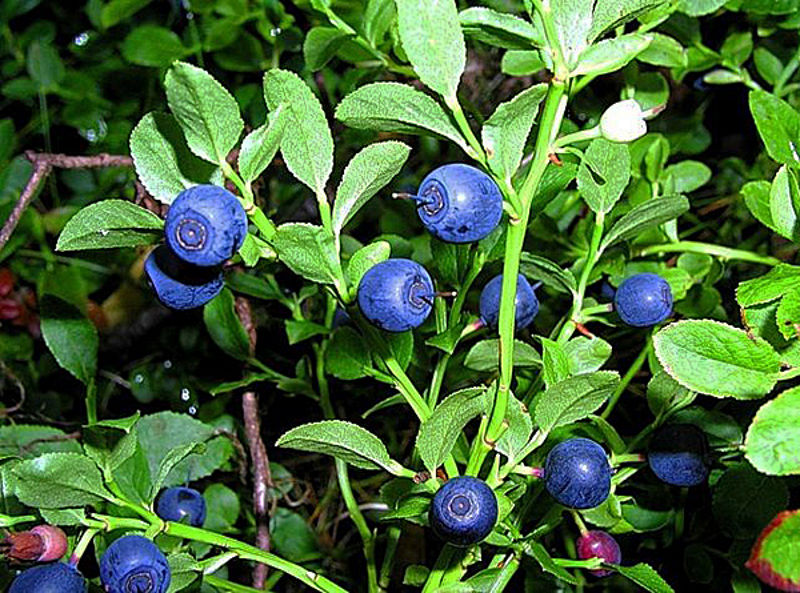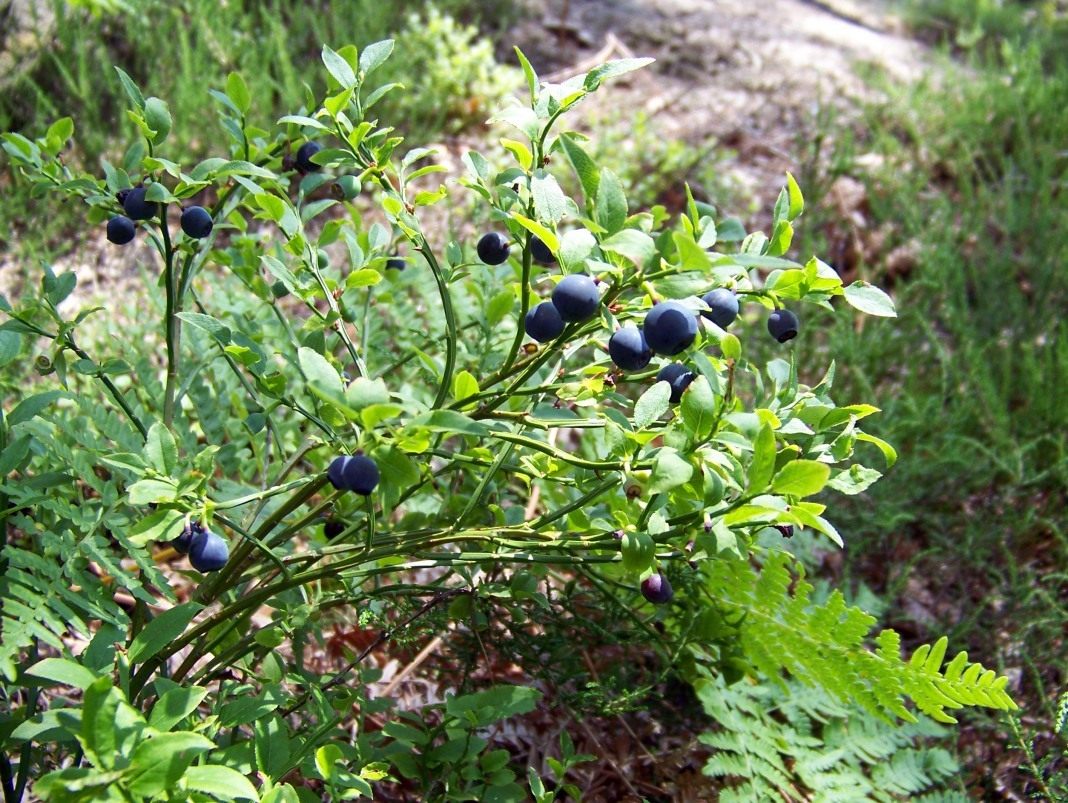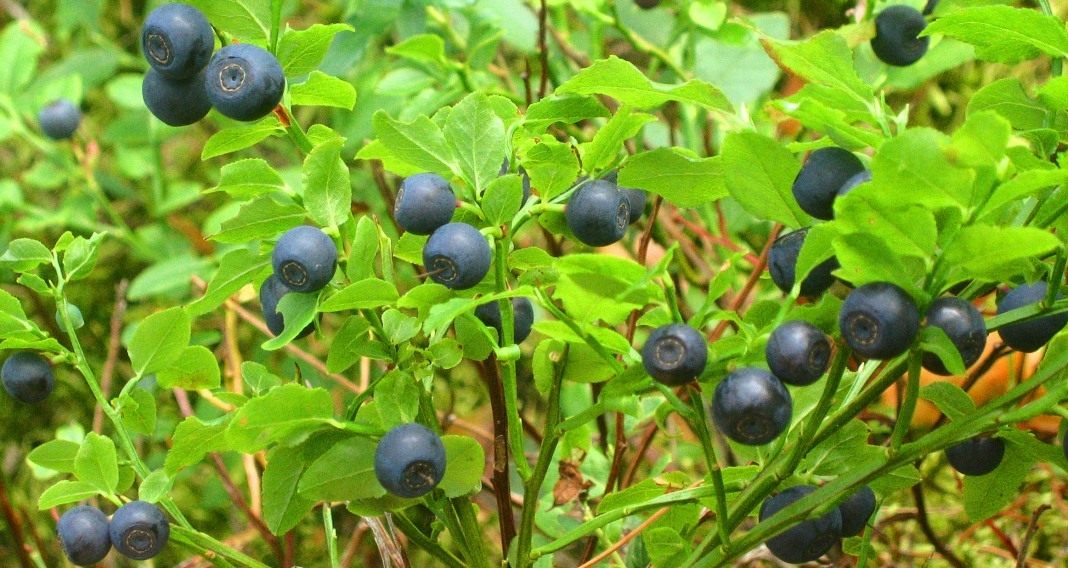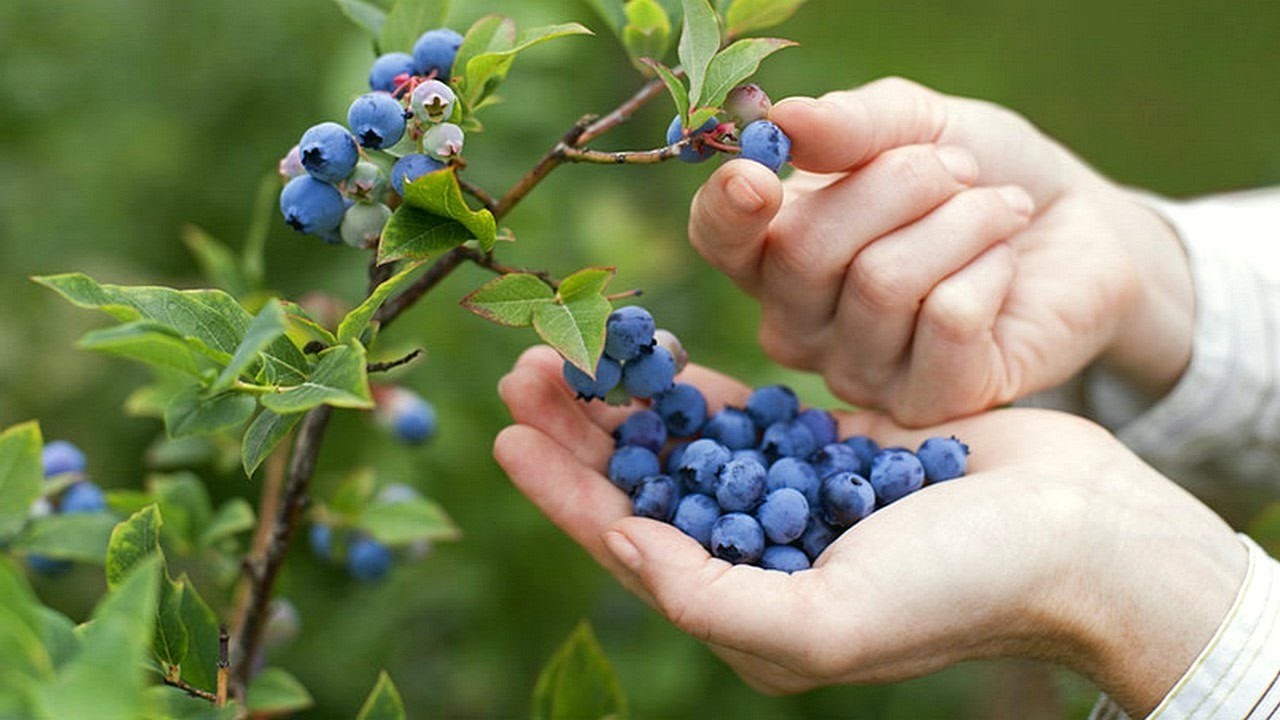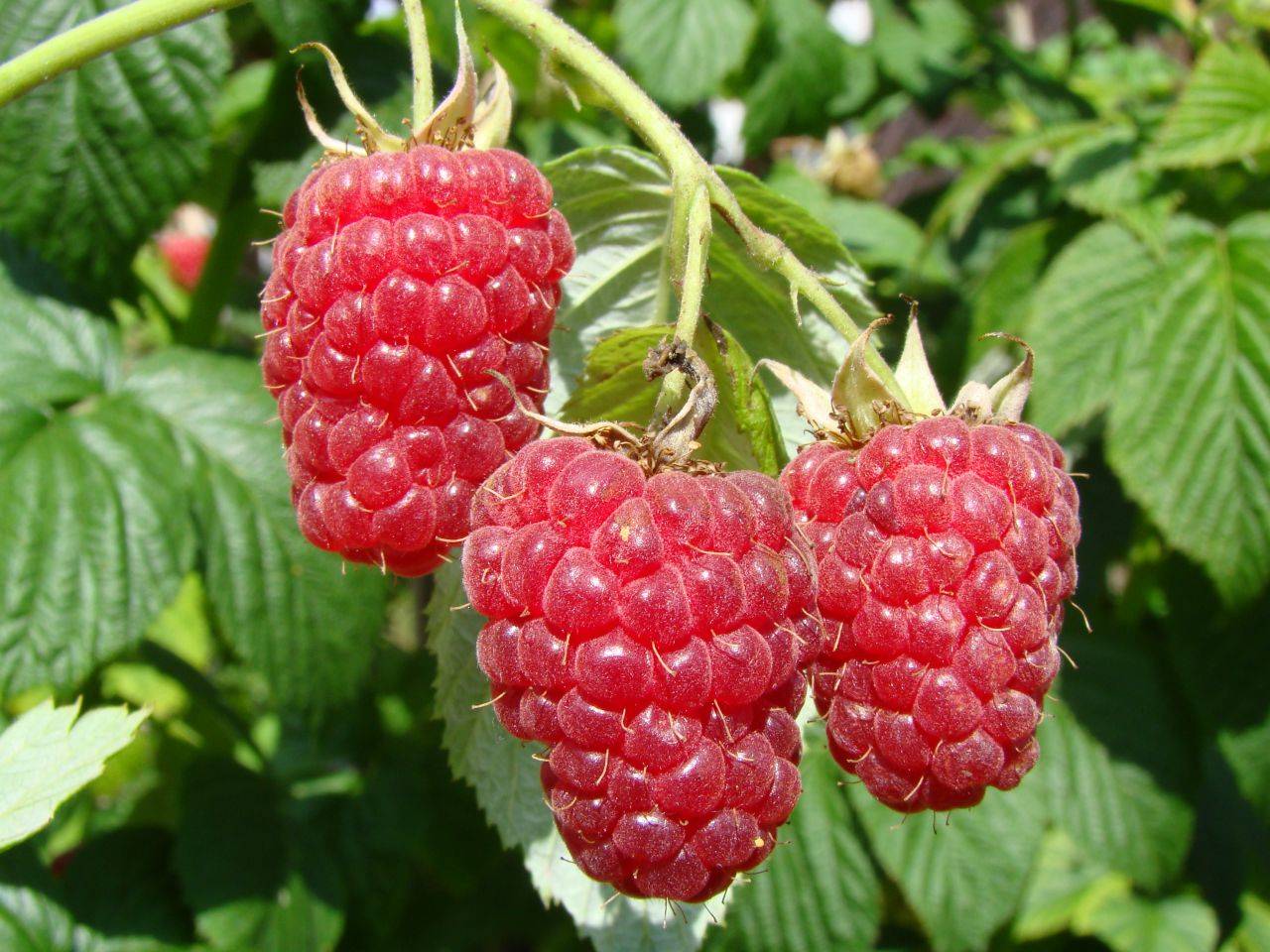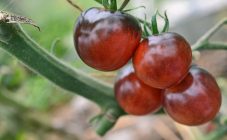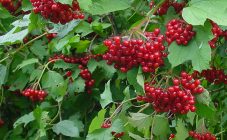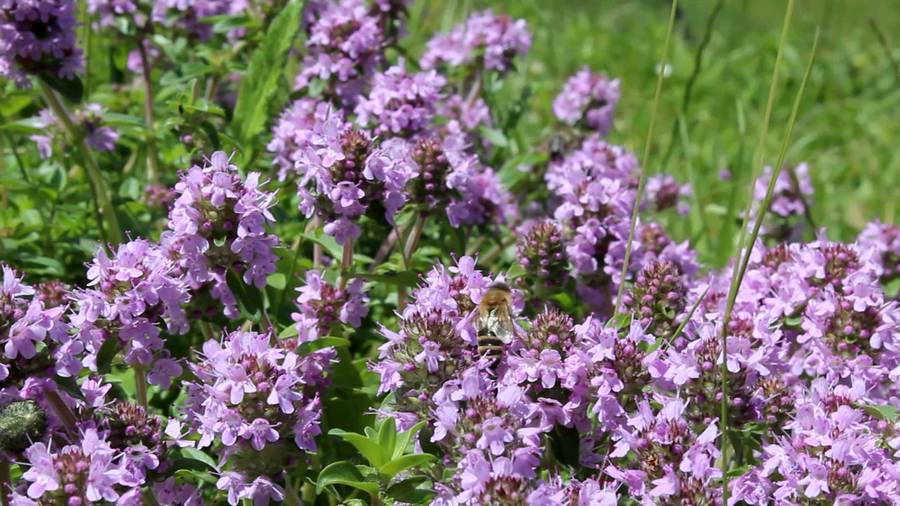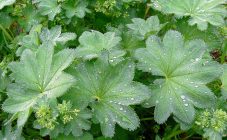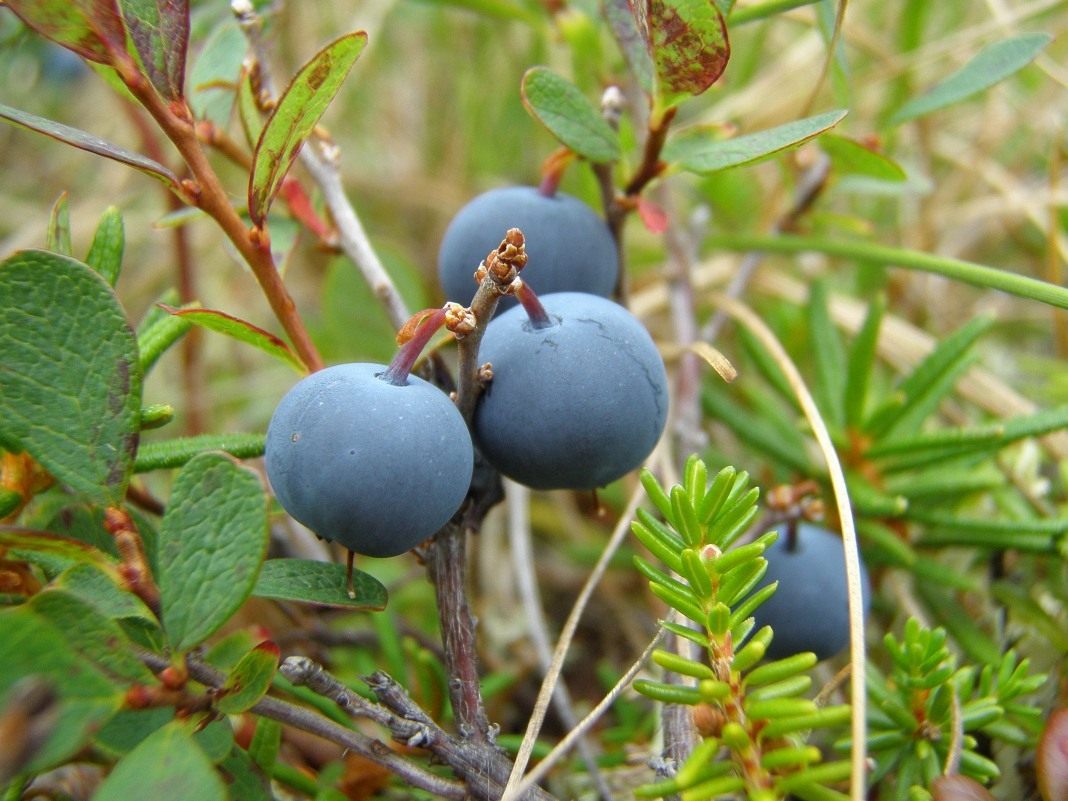Content:
Wild berries are a real storehouse of vitamins, useful microelements, rich taste and exquisite aroma. Therefore, our ancestors tried to cultivate them in order to grow them in their garden, vegetable garden. At first glance, ordinary blueberries are no exception.
What is blueberry, and what color is it, how to grow it and protect it from diseases, pests? This is detailed in this article.
Culture information
Bilberry is a herbaceous, medicinal plant that was used in folk medicine since the days of Kievan Rus. Information about blueberries as a medicinal berry is not exaggerated at all.
The description of blueberries for children says that it is a small plant with delicious dark blue berries that resemble a pea.
In terms of manganese content, common blueberries surpass even strawberries, as well as other fruits and vegetables.
Blueberries belong to the Heather (Lingonberry) family. Scientific name - Vaccinium myrtillus L.
The judgment that blueberries are an herb is not fully proven.
Why blueberries are called so is known and understood by everyone. The Russian name is associated with the ability of blueberries to stain lips and tongue blue-violet.
In a folk way, blueberries can be called black, dew or blue berries. During the times of Kievan Rus, she was often called - black man, blue man, blue woman.
Common blueberries sprout from the Arctic to the Mediterranean Sea. Blueberries are found in the tundra, taiga, and the alpine belt of mountains.
In Russia, it grows everywhere in pine and mixed forests in darkened, wetlands.
Description and characteristics
Plant characteristic
| Common blueberry description by evaluation parameters | |
| Bush, leaf, plant shade | The length of the deciduous shrub is forced from 15 to 50 cm. Branches are bare, bright green, branched. The leaves are pointed at the tops, pale below, leathery, finely serrate at the edges, solid. The shape is ovoid-elliptical. The shade is green. Leaves fall off by winter. |
| How blueberry bushes bloom, timing, characteristics of flowers | Begins to bloom in May, June. The plant is bee-pollinated. The fruits ripen by July. Fruiting from 2-3 years of age. The flowers are regular, with 4-5 bent teeth, on short pedicels, single ones in the leaf axils. The corolla of the flower is spherical, greenish with a pinkish tinge. |
| Fruits, their taste, calorie content | They are spherical, black berries with a blue tint. Inside, they are purple-red with many seeds. Fresh berries have a low calorie content, sweet, juicy taste. |
| Root system | Rod. Consists of hundreds of small and branched roots without root hairs. Reaches a length of 3 m. |
| Frost resistance | High. Withstands frosts down to -37 degrees Celsius. |
| Drought resistance | Low. Common blueberry prefers swampy areas, with a slight lack of water begins to wither, the fruits lose their visual appeal and taste. |
| Transportability | Good.The berry is suitable for long-term storage at controlled temperatures. |
Features of planting and care
Despite the unpretentiousness of this plant in the wild, gardeners and summer residents still have to work hard to grow it in their garden or dacha.
In order not to get into a situation where such painstaking care will not bring any result, it is worth considering all the nuances of growing in detail.
Site requirements
For common blueberries, it is imperative to choose a shady place, well protected from the wind, where the rays of the sun will not often fall. Open meadows and glades are not suitable.
The soil should not be nitrogenous, but always acidic (pH - from 3.5 to 5.0).
Since home soils are not acidic, experienced gardeners apply a 20 cm top layer of sour high-moor peat before planting. For small plantings, you can take a little forest soil.
The soil for planting in a garden or vegetable garden should hold moisture well.
Reproduction methods
Common blueberries propagate vegetatively. Root shoots are naturally separated on stolons. Stolons are cut 10 cm from the bush stem if necessary.
Landing scheme
Root shoots are planted in spring, when it has already warmed up (around April) or in autumn, from October to early November. The root ball must be moist before planting. If it is not well moistened before planting, the shoot will not take root in 90% of cases.
The pit is 80 by 80 cm in size, the depth is about 60 cm.The bushes are planted at a distance of 1.2 m.
After planting in a hole, the plant is abundantly sprinkled with earth. After it is watered, covered with a 2-3 cm layer of sawdust.
Watering
The soil around the blueberries should be constantly moist, but not waterlogged. Even rare droughts are not allowed.
Better not to water at night, do it in the morning. In dry weather (in summer, especially), the soil is watered every day.
Cropping and weeding
Sanitary pruning is done annually in the spring, around mid-April.
Frozen ends are removed from young bushes in spring. From 3-5 years of age, all old, non-fruiting shoots are cut out. 5-6 living buds are left on lignified shoots. For 6 years, during sanitary pruning, all branches are cut.
In the first 4 years, ordinary blueberries must be weeded 3 times: in spring, summer and autumn. At the 5th year, you can begin to carry out procedures once a year.
At the age of 15, rejuvenation procedures are performed: in the spring, all branches are cut at the root, leaving one central 25 cm long.
Top dressing
The plant is fed with mineral and organic fertilizers.
Every 3 years, the soil is renewed by bringing in peat mixed with sawdust and needles.
Annual top dressing must be applied in the spring, after loosening. The norm is no more than 12-15 g per adult bush. Ammonium superphosphate is suitable as mineral fertilizers. From organic - compost, manure, peat chips.
With a low acidity of the soil, purchased sulfur is used - about 50-60 g per bush. If the soil is heavy, river sand can be added.
An interesting solution that really works is planting garlic next to blueberries. It accumulates sulfur well, releasing it in a form in which ordinary blueberries can assimilate trace elements.
In early spring and after harvesting, they are treated with a 1% solution of Bordeaux liquid.
Harvesting and storage
One should not rush to pick berries. As soon as the fruits turn black, seemingly ripe, it is necessary to wait another 3-5 days for the berries to increase their weight and increase the amount of sugar.In order not to damage them during assembly, the berries are not plucked, they are only turned by grasping them with the index finger.
The fruits are suitable for drying, freezing, boiling.
Store in a cool place (0 degrees Celsius) with average humidity for about 6 weeks. In the refrigerator - 1 week.
Protection from pests and diseases
Common blueberries are often affected by fungal diseases. Potential pathogens in this area, which are often observed by gardeners and summer residents who grow blueberries:
- Ø Stem cancer - dark brown ulcers with small red rings form on the stems. Soon the plant rots.
- Ø Moniliosis - affects the leaves and fruits of blueberries, forming brown spots on them. The disease occurs in spring during damp and cold weather. The affected areas fall off over time.
- Ø Gray rot - at first a gray spot appears on the stem, which gradually grows throughout the plant. As a result, the fruits and stem become watery, covered with white fluff.
The following drugs are used to combat:
- Benomil.
- Kuprozan.
- Topsin-M.
Use according to the instructions. Processing is best done in spring, as well as in autumn, after harvest.
Of the pests, the terrible enemies of common blueberries are birds. At home, they love to feast on this berry as much as in their natural environment.
For protection, you must use a net that is sold in specialized stores. She is covered with bushes immediately after the beginning of flowering and removed during harvest.
Common blueberries, provided that all requirements for the place and soil are met, are unpretentious in care. It is enough to pay a little attention to the bushes, the plant in return will thank the gardener and summer resident with a plentiful and tasty harvest, which is extremely beneficial to health.
